I'm routing an RF board ( above 1 Ghz) with microstrip lines. Our plan is to feed it from the backside, take it through the via onto the top layer and continue routing. as part of our rules we pull back the ground copper pour to ensure microstrip behavior.
Should we do the same for the other layers the via passes through? Or is the patristic capacitance low enough to not worry about? Or would the patristic capacitance cancel out the inductance of the via?
